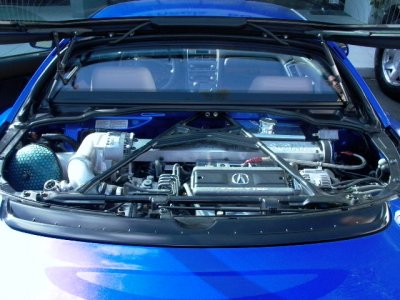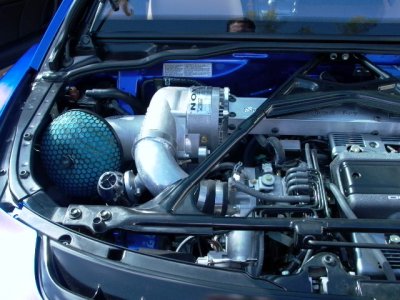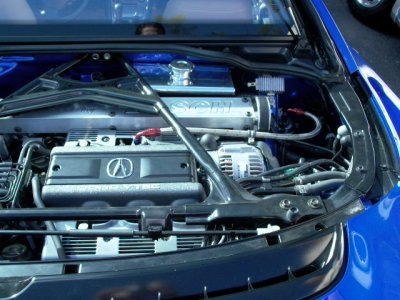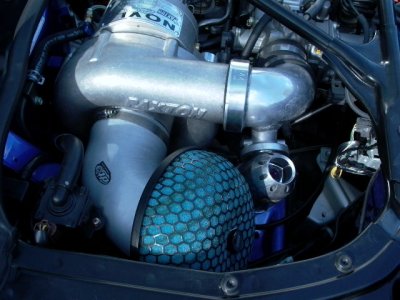Well here are the pictures of bbsc....to bad i cant get it to work properlly...i keep getting cam possition sensor code 1381 ..but the car runs ..i can wait for it to be 100% running right..hopefuly mark will fix it when he gets back from nsxpo..but i love the kit ..just cant wait..
You are using an out of date browser. It may not display this or other websites correctly.
You should upgrade or use an alternative browser.
You should upgrade or use an alternative browser.
installed my bbsc........
- Thread starter theWB
- Start date
Why is your kit not working correctly? Someone else just posted they just had theirs installed and it doesn't work right also.
That is one beautiful set up! Is that how the stock 02/03 engine plate cover looks, with the Acura emblem? Looks good!
Hope you get it running 100%!
Z
Hope you get it running 100%!
Z
Be careful, you might be next.


It isn't nice.. but seriously, BE CAREFUL. You do not want to end up on that list.
Isn't anyone else concerned that the two newest BBSC installs with the latest software etc. are not functioning properly???
I thought it was supposed to be fixed.
Isn't anyone else concerned that the two newest BBSC installs with the latest software etc. are not functioning properly???
I thought it was supposed to be fixed.
Did you change the Blow off Valve or is it the same one Mark installed?
Armando
Armando
Can I ask why?
LOL it might look gay, how is the HKS working for you? It looks noisy with the finned opening, does it give you the turbo squel when it opens?
I didn't think the SC's needed a Blow off valve??
Yellow Rose
Suspended
- Joined
- 22 November 2001
- Messages
- 2,256
Isn't anyone else concerned that the two newest BBSC installs with the latest software etc. are not functioning properly???
It is not a matter of the system not functioning properly, it is a matter of the system not being tuned properly. Those are two different issues. It is up to the installer to tune the kit to the car. Unlike the CTSC that needs no tuning, when a BBSC is moved from car to car, it needs re-adjustment.
It is not a matter of the system not functioning properly, it is a matter of the system not being tuned properly. Those are two different issues. It is up to the installer to tune the kit to the car. Unlike the CTSC that needs no tuning, when a BBSC is moved from car to car, it needs re-adjustment.
Yellow Rose
Suspended
- Joined
- 22 November 2001
- Messages
- 2,256
VERY TACKY
In addition to you not having a college degree, you also have no etiquette. That is scraping the bottom of the barrel.

NoClgDeg said:
In addition to you not having a college degree, you also have no etiquette. That is scraping the bottom of the barrel.
theWB said:works great....sounds awsome....
Where did you get it and what model is it?
Is this it? HKS-1421-SA001

Last edited:
NetViper said:I didn't think the SC's needed a Blow off valve??
The call it a wastegate
Virtually all SC applications make use of a bypass valve including all of the BBSC variations. The bypass valve is open under vacuum conditions and lets the air coming from the SC escape as opposed to being pushed up against a nearly-closed throttle plate. As soon as vacuum goes to zero, the bypass closes and the compressor is pushing air directly into the engine (no bypass).
Another very practical reason for the bypass is when the throttle is lifted under boosted conditions. Without a bypass valve, there is a shockwave as the throttle plate shuts that is arguable damaging over time to the internals of the SC. With a bypass in place, as soon as the throttle is lifted, vacuum is restored and the bypass opens providing an escape route for the air coming from the SC.
The HKS and similar bypass valves have questionable practical benefits over the more common Bosch type (plastic) units. However the HKS has a very distinctive chirp-whistle sound that tends to audibly advertise the presence of a compressor.
Another very practical reason for the bypass is when the throttle is lifted under boosted conditions. Without a bypass valve, there is a shockwave as the throttle plate shuts that is arguable damaging over time to the internals of the SC. With a bypass in place, as soon as the throttle is lifted, vacuum is restored and the bypass opens providing an escape route for the air coming from the SC.
The HKS and similar bypass valves have questionable practical benefits over the more common Bosch type (plastic) units. However the HKS has a very distinctive chirp-whistle sound that tends to audibly advertise the presence of a compressor.
Very Nice, choice i love how the HKS blow off valve sounds.
does the HKS make the same typical turbo "Whooosh" sound??? 
Similar threads
- Replies
- 11
- Views
- 1K
- Replies
- 10
- Views
- 239
- Replies
- 11
- Views
- 351








